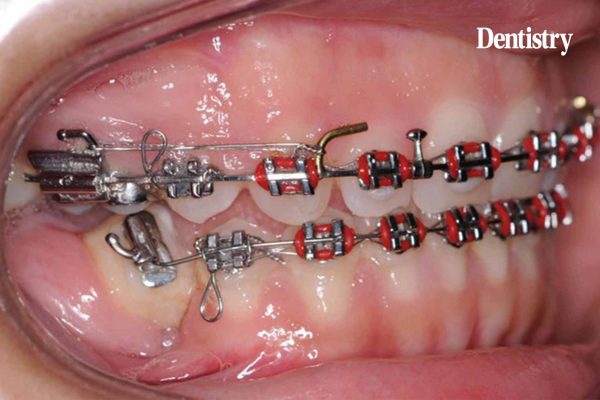Nikhil Gogna discusses closing extraction spaces and overcoming friction.
In simple terms, friction is defined as ‘the force opposing a movement when an object moves tangentially against another’. In other words, it is the resistance to sliding.
When straight-wire mechanics are used in orthodontics, friction generated at the wire-bracket interface influences the character of the force transmitted to teeth. This resistance is believed to reduce the efficiency of orthodontic appliances and result in slower tooth movement.
In recent years, there has been a plethora of literature published on methods to accelerate tooth movement (for example: vibrational appliances, micro-osteoperforations [MOP], piezocisions).
There is great debate on whether these modalities are clinically effective. Regardless of this, one method orthodontists can agree on is the elimination of friction.
Clinical relevance of friction
Orthodontic tooth movement during space closure is achieved through two types of mechanics:
- Sliding mechanics (friction mechanics)
- Closing loop mechanics (frictionless mechanics).
Frictional mechanics
Sliding mechanics (where teeth move along an archwire) is the most common and simplistic method. However, the rate of tooth movement may be compromised due to friction (Figure 1).
Frictionless mechanics
Orthodontists bend closing loops (Figure 2) in a continuous archwire or a segmented arch with a view to delivering forces that can perform space closure.
Well-designed closing loops produce more continuous types of movement that promote greater rates of tooth movement.
However, they are technique sensitive to bend and may generate unwanted vectors and side effects such as extrusion and tipping.
Pedro mechanics
An alternative method to overcome friction without the need to bend closing loops but achieve rapid space closure involves the use of pedro mechanics.
A classic example of utilising such mechanics are in class I cases complicated by hypodontia of lower second premolars. It may be desirable to close space by protracting the lower first permanent molars (Figure 3).
Pedro mechanics (Figure 4) involves the bonding of buttons on the lingual aspect of lower first premolar and first permanent molar and placement of a tube on the buccal aspect of the first permanent molar.
Powerchain is then attached buccally and lingually from the first premolar to the first molar. Note that no wire is present between these teeth as it enables frictionless movement.
The consequences of such mechanics mean uncontrolled tipping of the molar tooth. Although tooth movement is rapid, the clinician must be aware of how to rectify such problems.
Figure 5 highlights significant lower molar tipping, as the tooth protracts and is managed by engaging a light nickel titanium wire (eg, 012 nickel titanium) through the molar tube and using short, full-time class II elastics (Figure 6).
You should note that you must avoid any thicker wires – such as a 1622 nickel titanium – to correct the tipping. It carries the risk of resorbing the mesial root of the molar.
Conclusion
Pedro mechanics offer a unique and versatile method to protract molars in a frictionless manner.
Space closure in the case illustrated in this article was achieved in three and a half months, whereas conventional space closure would typically incur time of a minimum six months.
Uncontrolled tipping needs to be expected but close monitoring and careful management by using elastics can effectively resolve the molar position.
This article first ran in Private Dentistry magazine. Read the latest issue of Private Dentistry magazine here.


